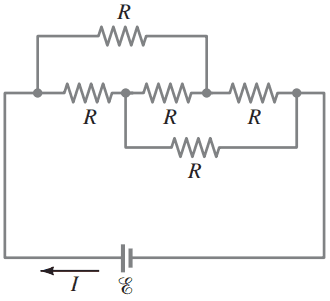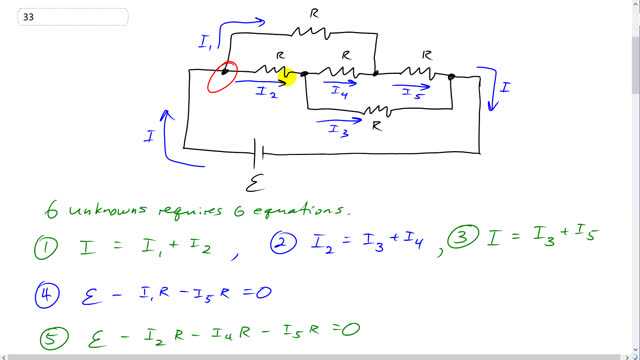
- A network of five equal resistors is connected to a battery as shown in Fig. 19–60. Determine the current that flows out of the battery.
- Use the value determined for to find the single resistor that is equivalent to the five-resistor network.


In order to watch this solution you need to have a subscription.
Two quick questions:
1) Why is the answer for part b different from what you would find by doing Req calculations based on the rules for parallel and in-series resistors? (I got 5R/8 that way).
2) By considering all three resistors that are arranged in series as having the same current by definition, you could solve for I with 3 equations and 3 unknowns. Would this be a correct approach?
Hi livanessa98, good questions.
1) The series/parallel formulas don't apply here. Looking at the circuit diagram, the junction with going in and and coming out makes all the difference. None of the resistors in this picture are in series. Surprising, I know! When resistors are in series it means that all the current going through one resistor must also go through the next, but with these junctions interfering, some of the current through one is being diverted among multiple resistors downstream, and for this reason they're not in series. None of the resistors are in parallel either because of these pesky junctions, which makes it a clever circuit diagram.
2) See (1) :)
Best wishes,
Mr. Dychko